
Once the movie was ready to be released PATTY MCCORMACK WAS NOT PERMITTED TO SEE IT. The Motion Picture Board of Review rated the film for "No One Under the Age of 16" and the actress who portrayed Rhoda Penmark on Broadway and in the motion picture was only eleven-years-old at the time. Although her parents saw the film in a private screening room on the Warner Brothers Studio's Lot. Jack L. Warner was afraid of the power of both the Review Board and the Catholic League of Decency. Had it gotten out that he had let "Underage" Patty McCormack view the picture, even in that private screening room, his studio would have become a target.
In 1966 local Los Angeles television station KHJ Channel 9 would show the same weekly motion picture at 7:30 PM each night Monday through Friday on a program entitled "The Million Dollar Theater". True Story! While Channel surfing Patty McCormack came to Channel 9 and found on Broadcast television "The Bad Seed". At the age of Twenty-one, Patty finally saw the motion picture she had co-starred in and been nominated for a Best Supporting Actress Oscar.
This is not an in depth look at censorship within the Motion Picture Industry. I leave that to the many books already written, but this is a look at several motion pictures I saw that for some reason, under some rule, were censored by someone. This article is an illustration of examples of film censorship between 1923 and 1971. By today's moral compass these examples are going to look weird, or irrational, but they're also an interesting reflection on our so called morality during the years they were made.
I turn back the clock of time to 1923. When directors and producers started a war with the first organized censor Will H. Hays and what would become known in 1930 as "The Hays Office". Will Hays was given his position in 1922 and immediately, from the Motion Picture Industry's point of view, took it a little too seriously.
At Paramount Studio's director Cecil B. DeMille was fed up with having his pictures censored in ways he felt destroyed some of the story. He went to the Head of the Studio and purposed an idea. He was taken up on it and 1923 saw the release of his original version of "The Ten Commandments".
Not one second of DeMille's final cut was censored. The motion picture was praised by religious leaders as a strong morality tale. However, Cecil B. DeMille's experiment against the censors had worked.
The first one third of the motion picture portrays the story of the ten plagues on Egypt and the Exodus of the children of Israel. This was followed by the giving of "The Ten Commandments" to Moses from God.
THEN DEMILLE KICKED INTO GEAR FOR THE REMAINING TWO THIRD'S OF HIS MOTION PICTURE.
He tells the story of two brothers. One becomes a minister and the other a famous architect. Within his praised morality tale the director had the architect and his friends break everyone of "The Ten Commandments" of the title in detail. DeMille had discovered that Biblical Sex sold and would pass "The Hays Office".
In 1930 the Motion Picture Industry decided to censor itself and created "The Motion Picture Production Code" that would also be administered by Will H. Hays. HOWEVER, the code did not go into effect until 1934. Therefore, in what would be known as "PRE-CODE" pictures were specifically created to push the envelope while the studio's could. A strange reaction to something they, themselves, created.
One such "Pre-Code" motion picture was Cecil B. DeMille's 1932 "The Sign of the Cross" starring Frederick March and Claudette Colbert. Although some local church censors, mainly in the deep South, would edit a scene or two. C.B. DeMille discovered, and others would follow, that as long as a motion picture claimed to be based upon Biblical stories, or Christian persecution by Rome. The motion picture would pass the "Hays Office" and no matter the visual content was cheered for its moral values.
Here is a tame scene from DeMille's "The Sign of the Cross", which seemed to have stolen its story from the novel "Quo Vadis".
The movie included Claudette Colbert's famous milk bath. The milk was deluded and it wasn't hard to realize the actress was totally nude and every part of her body was revealed at some point in the scene. The sequence got past even religious groups, because of the movie's depictions of Christian persecution by Colbert's "Empress Poppaes's" husband "Emperor Nero" portrayed by Charles Laughton.
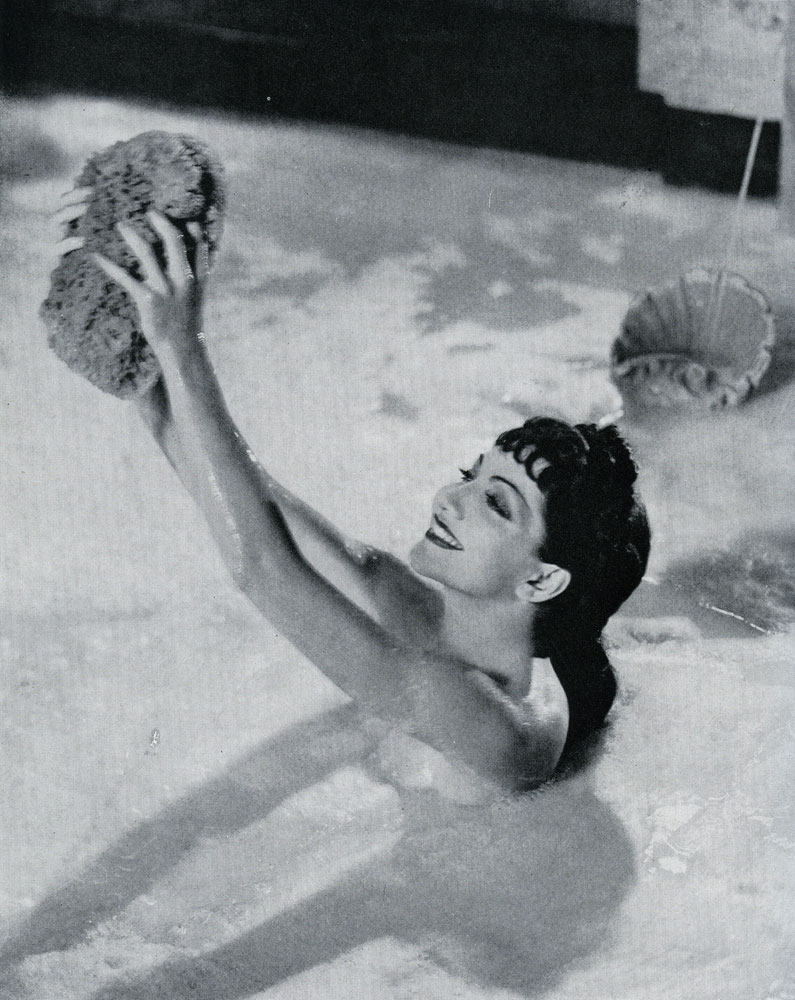
My detailed look at "Hollywood and the Bible" can be found on my blog at:
http://www.bewaretheblog.com/2015/05/the-bible-according-to-hollywood.html
One year after "The Sign of the Cross" opened Merian C. Cooper released a tale of a little primate named "KING KONG".
The first question I would ask my reader is what was this story based upon and, if I was in front of you. I am sure I would be getting a weird look. According to many film historians and critics. "King Kong" was not about "Beauty and the Beast", but INTERRACIAL MARRIAGE and the FEAR of it within the United States.
The fear was being expressed by WHITE religious organizations and local State Governments not just in the South. This concept was still being addressed as late as 2008 in multiple articles appearing in the "Journal of Personality and Social Psychology". Which included the observation that the fear was increased because:
the carrier of this blackness is not a human being, but an ape.Then there was the censorship of Cooper's "King Kong" over the years since its premiere in 1933. Although the movie would be re-released in 1938, 1942, 1946, 1952 when six year old Lloyd saw it first, and 1956, before showing up on television that same year, In each of those years the original motion picture was shorten more, only in the United States, without restoring one previously cut scene. As stricter censorship laws to protect our "decency" and especially our children's were created by both the Hayes Office and the Motion Picture Industry.
The major scenes cut over those years were:
The Brontosaurus chasing the crewman up the tree and killing him, and, Kong undressing Ann Darrow and smelling his fingers.

Along with, King Kong biting and stepping on the natives, and the similar sequence of Kong eating a New York newspaper reporter.
Lastly, is the scene of Kong mistaking a sleeping women for Ann Darrow in New York and dropping her to her death.

As a result of these known cuts and others made locally the films running time was reduced from it's original 104 minutes. When the picture premiered at the Grauman's Chinese Theater in Hollywood, California. That time included an Overture from Max Steiner's Score which was removed by RKO reducing the original distribution print to 100 minutes.
RKO never kept an original negative of the feature and the complete picture was thought lost. In 1969 a 16 mm print was found with all the censored footage intact.
The decades of the 1920's and 1930's were one of experimentation between the Censors and the Motion Picture Industry, but a the start of the decade of the 1940's a new form of censorship appeared under the name of patriotism.
America was attacked on December 7, 1941 the "Day of Infamy" proclaimed by President Franklin D, Roosevelt and the "Office of War Information got into the censorship act to protect American's from enemy propaganda and to tell the truth to the motion picture audience. Among those who enlisted to make OUR PROPAGANDA films were directors John Ford, John Huston, Frank Capra, George Stevens and Billy Wilder.
One such picture was called simply "December 7th". Navy Commander John Ford assigned his favorite pre-war cameraman now Navy Lieutenant Gregg Toland to make the picture. With a screenplay by the uncredited Budd Schulberg and music by Alfred Newman. Toland succeeded too well.
Gregg Toland had created a 82 minute feature film that asked several questions the Military and Roosevelt didn't want answered. Let alone known. Questions such as when we knew something might be coming neither the Army, or Navy sent out long range reconnaissance aircraft, or even short range patrols. Instead the Army had the planes placed together should there be a sabotage attempt and gave the Japanese airplanes easy targets. While the Navy has no real patrols and by pure luck had the carriers at sea on exercises. While the remaining ships were also easy targets with only one small channel to leave Pearl Harbor. Toland took a sympathetic point of view to the Japanese Americans on Hawaii and attempted to tell their story. That was almost considered aiding the enemy by his Superiors including John Ford.
John Ford went to work on a re-edit of Gregg Toland's motion picture and when "December 7th" received the Best Short Subject Academy Award it ran 32 minutes. It would be decades until the original cut was released and only after a complete feature was discovered.

There were other motion pictures related to Pearl Harbor that were made by the Japanese film company Toho and released in Japan before Gregg Toland's work. Both films had one objective boasting the morale of on the Home Front. My article on these films can be found at:
http://www.bewaretheblog.com/2016/12/i-bombed-pearl-harbor-december-7-1941.html
In 1950 Walt Disney turned Robert Louis Stevenson's "Treasure Island" into a motion picture. Four years later it was re- released and before the end of the decade was viewed as a two part presentation on his black and white television program "Disneyland". The motion picture also appeared in that two part format in the 1960's on"Walt Disney's Wonderful World of Color".
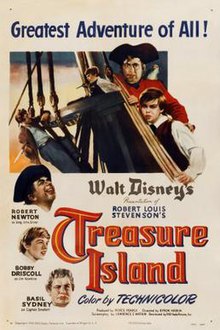
Walt had passed away on December 15, 1966, but the Disney Organization decided in 1975 to re-release the feature once again in movie theaters across the country. By that year there was now the "Motion Picture Association of America (MPAA)". The MPAA was the Motion Picture Industry's new "Self-Censor" that came into being in 1968. It's purpose was to replace the outdated "Motion Picture Production Code", but in reality the MPAA still arbitrarily rated films to be shown in theaters. The Disney Organization was upset when under the current guidelines this 1950 motion picture was to be rated "PG". Which stood for:
Parental Guidance, as some material may not be suitable for children.As a result and to keep their "Family Image" and receive a "G". "General Audiences" rating. The Disney Organization cut 9 minutes of the original 96 minute "Treasure Island".
Six years later "Treasure Island" first appeared in the United States on Video Tape. That original 1981 release was the shorten "G" rated version. For the next two re-releases and the Laser Disk version in 1983 and 1986. The shorten version was still being used to keep the "Disney G Image" alive. While even in Canada and Mexico those releases were the full motion picture as seen in 1950. It wouldn't be until 1991 that the original cut of "Treasure Island" was released to Home Media in this country.
There would be other problems for the Disney Organization with the MPAA over the animated feature film "The Black Cauldron". In 1985 the animated feature film initially received the new rating of "PG-13" described as:
Some material may be inappropriate for children under 13. Parents are urged to be cautious. some material may be inappropriate for pre-teenagers.If the battle over "Treasure Island" had been a problem to Disney's Family Image. This was a major disaster. They went to to mats with the MPAA. The end result was a "PG" rating:
Parental Guidance as some material may not be suitable for children."The Black Cauldron" became the first Disney motion picture not to be rated "G".
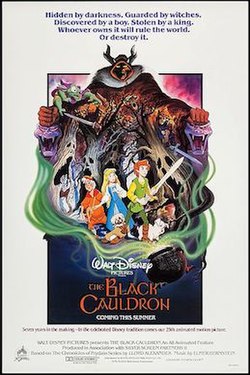
On July 8, 1953 an extremely controversial motion picture was released produced and directed by Otto Preminger. It would have the Catholic League of Decency and the State of New Jersey in full attack mode. The picture was entitled "The Moon Is Blue" and starred William Holden, David Niven and Maggie McNamara.

So what was the controversy over this romantic comedy based upon a popular Broadway play?
Joseph Breen of the "Breen Office". A part of Will H. Hays' operation since 1934 got into a small war with Otto Preminger and screenplay/play writer F. Hugh Herbert. Breen's apparent objection was that the story took:
an unacceptably light attitude toward seduction, illicit sex, chastity, and virginity.While at the same time the Catholic League of Decency rated the film version of the play as "C", or "Condemned by the Legion of Decency". After they had given the live stage version a "B", or "Morally objectionable in part" because of content.
It appeared this was a two prong attack on "The Moon Is Blue", but there is a little background here my reader needs to know about "Irish Catholic" Joseph Breen. Before he became part of the "Hays' Office". Breen founded "The Catholic League of Decency" and was their enforcer. Second, Breen was strongly anti-Semitic and Otto Preminger was Jewish and Breen made no bones about his personal hated for what he called:
The scum of the Earth running Hollywood.According to Scott Eyman's 2005 biography of Louis B. Meyer "Lion of Hollywood".
Returning to "The Moon Is Blue". For the first time on an American motion picture screen audiences heard the words
Virgin and Mistress referring to Maggie McNamara's character of "Patty O'Neill".At another point in the film speaks for the very first time of unwed pregnancy.
In parts of 1953 America this made the movie too shocking for audiences to see.
Based upon other dialogue in the "Moon Is Blue". The State of New Jersey banned the motion picture for depicting the state as:
Indecent and Obscene!Over all these objections David Niven won the Best Actor Golden Globe Award for Motion Picture Musical, or Comedy. Maggie McNamara was nominated for a Best Actress Academy Award.
In 1957, 10 years old Lloyd, would see two motion pictures from the British Studio Hammer Films. The main feature on this double bill was the first actual pairing of British Actors Peter Cushing and Christopher Lee in "The Curse of Frankenstein". What I didn't know at the time was that I could not have seen the picture in the United Kingdom where it was made. Like Patty McCormack I was too young. The film in its country of origin had an "X Certificate" rating.

In 1957 no one under 16 years of age was permitted into a United Kingdom theater to see either horror, or science fiction movies. The age was raised in 1970 to no one under 18 years of age. In 1982 this was replaced by the "18 Certificate". Back in 1957 one of my current neighbors was from the UK. We were discussing Hammer Films and Tom told me about how he and some other under 16 boys used an emergency exit door to enter a theater to see the picture. Seems I recall doing the same at one time.
As the poster for "The Curse of Frankenstein" indicates the co-star even above Christopher Lee was actress Hazel Court. Her film story can be found on my blog at:
http://www.bewaretheblog.com/2017/06/hazel-court-frankensteins-bride-and.html
In 1966 stop motion animator Ray Harryhausen released a motion picture "One Million Years B.C. I was in the Navy at the time and my aircraft carrier, the U.S.S. Shangri-la CVA-38, put in at the island of Malta. While on shore leave I came upon a movie theater showing the Harryhausen picture.

What caught my eye was the box office sign that proclaimed "No One Under 21 Years of Age Permitted" to see the feature film. Having seen every previous picture Ray had made. This age restriction puzzled me for a moment, but the cashier explained Malta's film rating to me. Of course I saw it there and when we returned to the United States. I would again see Ray's picture as part of a triple bill, with Hammer's "The Vengeance of She" and "The Lost Continent" in Jacksonville, Florida. However, I remember thinking something seemed wrong with the Harryhausen picture in Florida, but I couldn't figure what that might have been.
The answer was American censorship!
The version of "One Million Years B.C." shown in the United States and available only on DVD until this year, 2017, was edited. The actual UK/International release runs 100 minutes. While the picture American's are used to seeing only 91 minutes.
The following three sequences were either removed, or edited out to avoid the Motion Picture Production Code rating of:
Suggested for Mature Audiences OnlyWhich would have reduced the number of States the picture would be permitted to be shown in the United States, at the time. This fact seems incredible to fans, like myself, of Ray Harryhausen's work since 1949's "Mighty Joe Young", but certain State legislatures and religious groups held sway, especially in the south.
The first removed sequence was of what the "Catholic League of Decency" and other conservative religious groups considered a very provocative dance performed by actress Martine Beswick. Below is Martine in a publicity.

There are two sequences in a cave that "Tumak" and "Loana" enter for protection from dinosaurs. In both are two throw back humanoids that are more apelike than human. In one of these, there is what is described as a very gruesome end to the life of one of the early humans.
The third sequence was edited for violence and is the Allosaurus attack on the Shell Tribe.

Essentially this film was a remake of the Hal Roach production "One Million B.C." from 1940 with the word "Years" added to the title. The picture was co-produced by Hal Roach, Jr. who had worked with his father on the original movie. However, the screenplay expanded on the semi-Romeo and Juliet story of Loana and Tumack to become an anti-Vietnam war allegory according to many reviewers.
Let me go back to 1960 and the first of two interesting pictures I saw at the Majestic Theater in Santa Monica, California. The first was Alfred Hitchcock's "Psycho".

The picture was still 8 years away from the MPAA Ratings and there wasn't even a "Suggested for Mature Audiences" tag line to the film. So 13 year old Lloyd was in the audience with many of his peers for the first Saturday morning performance after "Psycho's" release date. I remember the manager coming out before the picture began and warning us that any loud noise, or improper behavior would have us immediately thrown out. As this film really wasn't for young people are age, but Adults.
From a censor's point of view I can mention the famous shower scene were you didn't see anything, but because of great editing and shots by Hitchcock. You thought you did. For those counting! The completed THREE MINUTE scene has 50 editing cuts by Hitch and film editor George Tomasini. Then of course there was that thick blood going down the drain which in reality was Hersey's chocolate syrup.

However, that is not the scene that upset the Hays Office's so much.
There had been many taboos in motion pictures since the first flicker of film on an American silent screen back in the days of Thomas A. Edison. SHOCKINGLY Alfred Hitchcock's "Psycho" was the first to break one of them and that event caused as much controversy, if not more at the time, then the infamous shower scene.

In the story Janet Leigh's "Marian Crane" needs to destroy some documents and she rips them up and flushes them down the toilet. Very logical.
Hitchcock, like DeMille before him, was sick and tired of the Hayes and Breen Offices telling him to remove a certain scene or edit it down. So he pushed their limits by making that sequence CRITICAL to the entire plot and it worked.
"Psycho" premiered in New York City on June 16, 1960 at appropriately enough "The DeMille Theater". I challenge any of my readers to find an American made motion picture released prior to that date which shows a toilet, Apparently, like married couples requiring separate beds which defies how babies were born. In feature films you might see a shower, or tub in a bathroom. You would always see somebody washing their hands at a sink, BUT you never saw the TOILET. American's just never used one I suppose.
Although released in Italy in 1960 the motion picture "La maschera del demonio" aka" The Mask of Satan" aka: "Revenge of the Vampire" was directed by Italian Horror Master Mario Bava and arrived in the United States from American International Pictures in 1961 as "Black Sunday".

The story tells of the witch Princess Asa Vajda. Who comes back to life as a vampire and attempts to posses the body of her decedent Princess Katia Vajda. The look a like characters are played by British actress Barbara Steele. This motion picture holds its own and is still a very moody/atmospheric black and white treat.
"Black Sunday" is not the original Mario Bava motion picture and even some DVD's with an Italian track are misleading and not the original cut. Although they are passed off as such. That original Italian production is available, but not for the United States unless you have an "All Region DVD Player" as of this writing.
The translated English title "The Mask of Satan" was viewed in 1961 as completely objectionable for use, because it referred to the "Anti-Christ". Indicating again the power of Religious Groups such as "The Catholic League of Decency" and "Evangelical Christianity" in the Mid-West and Southern States toward audience attendance, or more clearly box office receipts.
Even though I will point out seeing in 1957 the Swedish masterpiece by Ingmar Bergman "The Seventh Seal". In which Max von Sydow as a knight plays chess with Satan. The rationale here by these religious organizations is that the picture is in Swedish with subtitles. Somehow in their thinking it is classified as different from the Mario Bava picture. Mainly because it is not dubbed into English and being passed off as an American motion picture. Additionally, such films were not widely distributed and played mainly in large cities in what were known as "Art House Theaters" to limited audiences.
I should also mention that when I saw the picture in 1961. There was a title card added before the opening credits saying the distributor considered the motion picture only suitable for audiences 14 years of age and older. This was nothing more than a gimmick to get people into the theater.
What was censored/edited out of the film by American International Pictures to allow it to get by the censors in actuality was only three minutes. However, those cuts and a rewritten English language track changed the sexual content and relationships from the original Mario Bava feature completely.
When the studio first received the film. The Italian film company Galatea had provided an English language track that kept Bava's story intact.

In "Black Sunday" the audience is told that Arturo Dominici's character of Igor, above, is the servant of the witch Asa. In the original Italian feature he is not Igor Javuto, but Igor Vajda her brother and they have a sexual relationship. Adding to the reason for the two being sentenced to death for sorcery in the opening.
Just before the mask is placed on Asa's face. She is branded with the letter "S" for Satan, but the burning of her flesh as she is branded was cut.



After the mask is hammered onto Asa's face the audience sees blood coming out of the eye sockets, but this was removed by AIP for American sensibilities.
When Katia's father Prince Vajda, Ivo Garrani, is destroyed in the fireplace. The peeling away of the flesh on his face was edited out for the same reason.

Another "Objectionable" sequence lasted all of two seconds. In it Andrea Checchi as Dr. Thomas Khuvajan is looking at Asa in her tomb and is compelled to kiss the vampire on her lips.
One does not show a person kissing a corpse.
Another change made for American audiences was in a line Asa speaks:
You, too, can find the joy and happiness of Hades!Became:
You, too, can find the joy and happiness of Hate!
The UK censors also redid Mario Bava's film into an even more restricted version. The full version of the picture was presented to the censors under the title "The Mask of Satan" in 1968 with Galatea's English language sound track. It was rejected and banned from any showing in the UK. Another distributor attempted later by changing the picture's title to the "Revenge of the Vampire" and the censors requested extensive cuts, BUT even the edited feature was not permitted release in the UK until 1992.
Should my reader be interested in either Mario Bava's other works, or that of Italian director Dario Argento. You will find my blog article of these two Cinema Masters at:
http://www.bewaretheblog.com/2015/07/dario-argento-and-mario-bava-two.html
Even Frank Sinatra, Deborah Kerr, and Dean Martin experiences censorship. What became their 1965, comedy motion picture, "Marriage on the Rocks", had the entire original screenplay rewritten. Apparently, it was considered very offensive and the new treatment had to be submitted for approval to the censorship office again. When it was released in the U.K., the following poster was used:
By the end of 1968 rating motion pictures had become the sole responsibility of the "Breen Office" overseeing the new MPAA ratings in a changing National scene.
Two of these changes were related to each other. The social views of America's Youth reflected within the "Hippie Movement" and the reality that the Vietnam War was not the glorious fight of World War 1 and 2, or even Korea.
A prime example of this change was a motion picture released on May 25, 1969 starring Dustin Hoffman and new comer Jon Voight. When "Midnight Cowboy" was first released it received the MPAA rating of "X". At the time meaning:
No Persons under 16 admitted

Here was a major motion picture that dared to deal with a homosexual relationship. A dangerous subject to mention and not just in the deeply religious South and parts of the Midwest. So to warn parents this really wasn't a picture for their young children and may not be one for their own moral values, The MPAA decided they had no other option but their toughest age restriction.
However, the "X" rating had the unexpected effect of creating word of mouth for the picture. Once audiences saw Dustin Hoffman's and Jon Voight's performances that word of mouth increased expediently.
The movie became the first LGBT related Academy Award winner. Nominated for 7 Oscars it won 3 including Best Picture. Nominated also for 7 Golden Globes it won one. The picture was nominated for 6 BAFA's and won all 6 including Best Picture. There were others awards going to this striking and powerful film on what until then was an untouchable subject.
In a move to make the film more readily available across the county to areas that wouldn't think of showing an "X" rated feature. The 1971 re-release contained some minor cuts to the original release. The MPAA now rated "Midnight Cowboy" "R". Which because the rating system was changed in 1970 actually raised the age limit instead of lowering it. Thereby making it a tougher age restriction than when it first came out.
An "R" rating in 1971 now meant:
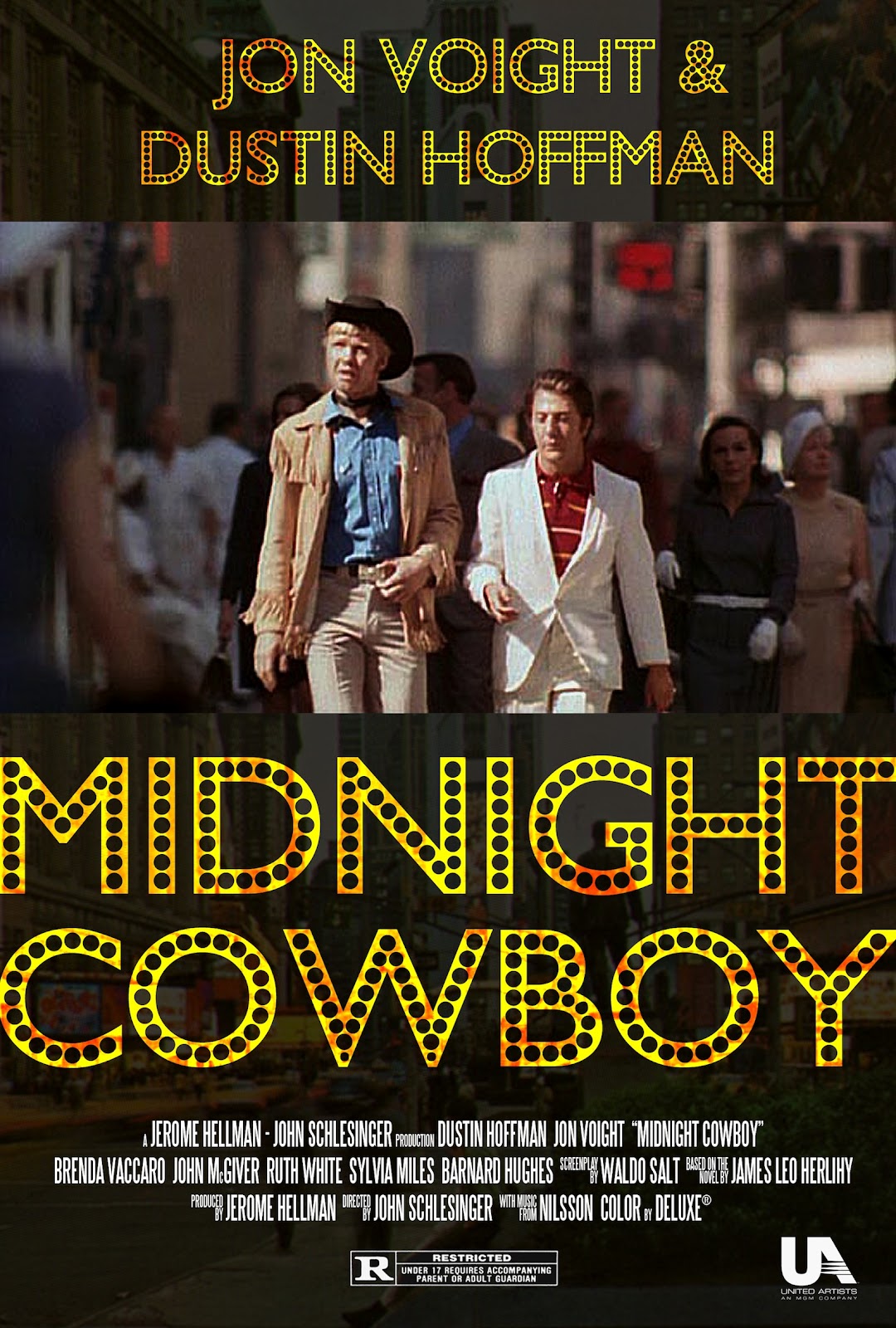
The "Midnight Cowboy" solution was used by Stanley Kubrick and Warner Brothers to have "A Clockwork Orange" upon re-release rated "R" instead of its original "X". The only attendance change this caused was allowing anyone under 17 to see the movie accompanied by a parent or guardian. As there wasn't the 16 to 17 age difference that effected "Midnight Cowboy".
Some of my readers might be thinking what about pornographic motion pictures? What rating did they have and the answer was none. The industry and the Adult Theaters used "No one admitted under 21 years of age" to avoid legal problems. However, by 1971 they were also using the "X" rating as a lure to their pictures and some films were rated "XX", "XXX" and even "XXXXX" which really meant nothing if you were under 21 at the time.
Then there was "Beyond the Valley of the Dolls".
In 1966 a first novel by Jacqueline Susann "Valley of the Dolls" came out about three young actresses looking for success and became a world wide best seller. The novel's character's were obviously based upon Judy Garland, Carole Landis, Dean Martin. Ethel Merman and other easily recognized celebrities. Although Susann denied it. The "Dolls" of the title were the popular slang name for "depressant pills", or "downers".
On December 15, 1967 20th Century Fox released an all star film version of the novel. The three young actresses in novel were played by three popular young actresses. Barbara Parkins, from TV's "Peyton Place", portrayed "Anne Welles", Patty Duke portrayed the too obvious Judy Garland "Neely Harris" and Sharon Tate was "Jennifer North". In the over the top Ethel Merman role was Susan Hayward.
The movie had a $4,900,000 budget and grossed Worldwide $11,443,225. So naturally the idea of a sequel seemed like a good financial decision for the studio. What resulted was not what they planned, but was a money maker.
Initially the idea was for Jacqueline Susann to write the sequel, but she declined. Then some interesting choices were made. The first being the director hired for the new picture Russ Meyer. Meyer was known for his "Skin Flicks", topless women, in such classics (?) as "The Immoral Mr. Teas", "Eve and the Handyman" and "Wild Girls of the Naked West". Along with two low budget violent stories "Faster, Pussycat! Kill! Kill! Kill!" and "Motorpsycho!". However, his directing skills were excellent and he delivered at a very low budget.
Meyer hired a young unknown writer named Roger Ebert to do his first screenplay for "Beyond the Valley of the Dolls". The two men came up with what was a parody of the original motion picture and Hollywood in general. Then Russ Meyer stocked the film with some of his own movie company including his then wife and shot a film with a budget, depending on who you research with, of either $900,000, or $2,090,000. The film was released on June 17, 1970. Bottom line the picture which initially received an "X" rating from the MPAA grossed $40,000,000.
What I find interesting is how Meyer and Ebert, each described what the motion picture was supposed to actually be.
First Roger Ebert in a piece he wrote in 1980 said the picture was:
Russ Meyer's initial response to the film's "X" rating was to ask 20th Century Fox to permit him to add more nudity to the picture which contained full frontal. They declined. It wouldn't be until 1990 a full twenty years later, before the MPAA would reclassify "Beyond the Valley of the Dolls" down to NC-17.
I want to end this article with a look at a motion picture that caused major concerns in different parts of the United States, because of its content and its challenge to old moral values still in use in parts of the country. Yet the film clearly reflected the moral changes in the country by the year 1971. The picture was "Carnal Knowledge".
One of the clever poster's advertising the motion picture:

The motion picture was written by Jules Feiffer and directed by Mike Nichols. It was released on June 30, 1971. The screenplay wasn't a screen play, but a purposed stage play that Nichols thought would work better on film.
Jack Nicholson portrayed "Jonathan Fuerst", Arthur Garfunkel was "Sandy", Candice Bergen was "Susan", Ann-Margaret was "Bobbie, Rita Moreno was "Louise". Carol Kane played "Jennifer" and finishing the small cast was Cynthia O'Neil in the role of "Cindy".
Unlike the original releases of "Midnight Cowboy", "Clockwork Orange", or "Beyond the Valley of the Dolls". From its initial release "Carnal Knowledge" was MPAA rated "R". A major acknowledgement by the Motion Picture Industry of the changes in the country's overall moral values by 1971. However, unlike those other motion pictures. "Carnal Knowledge" became embroiled in a legal battle that went all the way to the United States Supreme Court.
The following is a scenes referred too in the Georgia Supreme Court case I am about to describe.
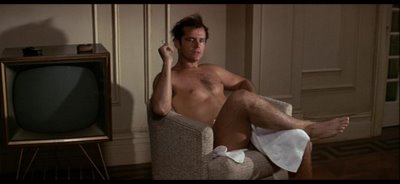
The trouble came on January 13, 1972 when Albany, Georgia police served a search warrant on a local movie theater that was showing "Carnal Knowledge". The police seized the motion picture and in March of that year the theater manager, not the owner, a Mr. Jenkins was tried and convicted of the crime of "distributing obscene material". An appeal to the Georgia Supreme Court failed and the case reached the U.S. Supreme Court in 1974.
On June 24, 1974 the Court's decision was that the State of Georgia had gone too far by classifying "Carnal Knowledge" as "obscene". Their decision was based upon "Miller v. California" from 1973. That decision redefined what "obscenity" means.
Initially the legal definition of Obscenity was:
The "Miller v California" decision defined Obscenity as lacking:
This small blog article, as I stated at the beginning, was not intended to tell the complete story, or make a detailed account of MOTION PICTURE CENSORSHIP. It's goal was to give my reader a look at how the industry over the years changed with the times, but still even as of this writing seems to want to be the "PROTECTOR" of our morality through what I would call a dark lens.
So I close with the words of the U.S. Supreme Court Decision on the film "Carnal Knowledge":
In a move to make the film more readily available across the county to areas that wouldn't think of showing an "X" rated feature. The 1971 re-release contained some minor cuts to the original release. The MPAA now rated "Midnight Cowboy" "R". Which because the rating system was changed in 1970 actually raised the age limit instead of lowering it. Thereby making it a tougher age restriction than when it first came out.
An "R" rating in 1971 now meant:
Restricted-Under 17 requires an accompanying parent or guardianWhile the "X" rating was dropped and it was now called "NC-17":
No one under 17 admitted

The "Midnight Cowboy" solution was used by Stanley Kubrick and Warner Brothers to have "A Clockwork Orange" upon re-release rated "R" instead of its original "X". The only attendance change this caused was allowing anyone under 17 to see the movie accompanied by a parent or guardian. As there wasn't the 16 to 17 age difference that effected "Midnight Cowboy".
Some of my readers might be thinking what about pornographic motion pictures? What rating did they have and the answer was none. The industry and the Adult Theaters used "No one admitted under 21 years of age" to avoid legal problems. However, by 1971 they were also using the "X" rating as a lure to their pictures and some films were rated "XX", "XXX" and even "XXXXX" which really meant nothing if you were under 21 at the time.
Then there was "Beyond the Valley of the Dolls".
In 1966 a first novel by Jacqueline Susann "Valley of the Dolls" came out about three young actresses looking for success and became a world wide best seller. The novel's character's were obviously based upon Judy Garland, Carole Landis, Dean Martin. Ethel Merman and other easily recognized celebrities. Although Susann denied it. The "Dolls" of the title were the popular slang name for "depressant pills", or "downers".
On December 15, 1967 20th Century Fox released an all star film version of the novel. The three young actresses in novel were played by three popular young actresses. Barbara Parkins, from TV's "Peyton Place", portrayed "Anne Welles", Patty Duke portrayed the too obvious Judy Garland "Neely Harris" and Sharon Tate was "Jennifer North". In the over the top Ethel Merman role was Susan Hayward.
The movie had a $4,900,000 budget and grossed Worldwide $11,443,225. So naturally the idea of a sequel seemed like a good financial decision for the studio. What resulted was not what they planned, but was a money maker.
Initially the idea was for Jacqueline Susann to write the sequel, but she declined. Then some interesting choices were made. The first being the director hired for the new picture Russ Meyer. Meyer was known for his "Skin Flicks", topless women, in such classics (?) as "The Immoral Mr. Teas", "Eve and the Handyman" and "Wild Girls of the Naked West". Along with two low budget violent stories "Faster, Pussycat! Kill! Kill! Kill!" and "Motorpsycho!". However, his directing skills were excellent and he delivered at a very low budget.
Meyer hired a young unknown writer named Roger Ebert to do his first screenplay for "Beyond the Valley of the Dolls". The two men came up with what was a parody of the original motion picture and Hollywood in general. Then Russ Meyer stocked the film with some of his own movie company including his then wife and shot a film with a budget, depending on who you research with, of either $900,000, or $2,090,000. The film was released on June 17, 1970. Bottom line the picture which initially received an "X" rating from the MPAA grossed $40,000,000.
What I find interesting is how Meyer and Ebert, each described what the motion picture was supposed to actually be.
First Roger Ebert in a piece he wrote in 1980 said the picture was:
---a satire of Hollywood conventions, genres, situations, dialogue, characters and success formulas, heavily overlaid with such shocking violence that some critics didn't know whether the movie 'knew" it was a comedy.Later Ebert said the picture seemed:
Like a movie that got made by accident when the lunatics took over the asylum.On the other hand Russ Meyer described the movie in the same article by Ebert as:
Simultaneously being a satire, a serious melodrama, a rock musical, a comedy, a violent exploitation picture, a skin flick and a moralistic expose, of what the opening crawl called 'the oft-times nightmarish world of Show Business'To those last seven words in Meyer's description of the picture. No one who saw it, and this definitely contributed to the attendance, could not forget that Sharon Tate had been in the original motion picture and had been brutally murdered by Charles Manson and his followers only ten months earlier.
Russ Meyer's initial response to the film's "X" rating was to ask 20th Century Fox to permit him to add more nudity to the picture which contained full frontal. They declined. It wouldn't be until 1990 a full twenty years later, before the MPAA would reclassify "Beyond the Valley of the Dolls" down to NC-17.
I want to end this article with a look at a motion picture that caused major concerns in different parts of the United States, because of its content and its challenge to old moral values still in use in parts of the country. Yet the film clearly reflected the moral changes in the country by the year 1971. The picture was "Carnal Knowledge".
One of the clever poster's advertising the motion picture:

The motion picture was written by Jules Feiffer and directed by Mike Nichols. It was released on June 30, 1971. The screenplay wasn't a screen play, but a purposed stage play that Nichols thought would work better on film.
Jack Nicholson portrayed "Jonathan Fuerst", Arthur Garfunkel was "Sandy", Candice Bergen was "Susan", Ann-Margaret was "Bobbie, Rita Moreno was "Louise". Carol Kane played "Jennifer" and finishing the small cast was Cynthia O'Neil in the role of "Cindy".
Unlike the original releases of "Midnight Cowboy", "Clockwork Orange", or "Beyond the Valley of the Dolls". From its initial release "Carnal Knowledge" was MPAA rated "R". A major acknowledgement by the Motion Picture Industry of the changes in the country's overall moral values by 1971. However, unlike those other motion pictures. "Carnal Knowledge" became embroiled in a legal battle that went all the way to the United States Supreme Court.
The following is a scenes referred too in the Georgia Supreme Court case I am about to describe.

The trouble came on January 13, 1972 when Albany, Georgia police served a search warrant on a local movie theater that was showing "Carnal Knowledge". The police seized the motion picture and in March of that year the theater manager, not the owner, a Mr. Jenkins was tried and convicted of the crime of "distributing obscene material". An appeal to the Georgia Supreme Court failed and the case reached the U.S. Supreme Court in 1974.
On June 24, 1974 the Court's decision was that the State of Georgia had gone too far by classifying "Carnal Knowledge" as "obscene". Their decision was based upon "Miller v. California" from 1973. That decision redefined what "obscenity" means.
Initially the legal definition of Obscenity was:
Utterly without social redeeming value
The "Miller v California" decision defined Obscenity as lacking:
Serious literary, artistic, political, or scientific value
This small blog article, as I stated at the beginning, was not intended to tell the complete story, or make a detailed account of MOTION PICTURE CENSORSHIP. It's goal was to give my reader a look at how the industry over the years changed with the times, but still even as of this writing seems to want to be the "PROTECTOR" of our morality through what I would call a dark lens.
So I close with the words of the U.S. Supreme Court Decision on the film "Carnal Knowledge":
Our own viewing of the film satisfies us that Carnal Knowledge could not be found … to depict sexual conduct in a patently offensive way. Nothing in the movie falls within … material which may constitutionally be found … "patently offensive" … While the subject matter of the picture is, in a broader sense, sex, and there are scenes in which sexual conduct including "ultimate sexual acts" is to be understood to be taking place, the camera does not focus on the bodies of the actors at such times. There is no exhibition whatever of the actors' genitals, lewd or otherwise, during these scenes. There are occasional scenes of nudity, but nudity alone is not enough to make material legally obscene… Appellant's showing of the film Carnal Knowledge is simply not the "public portrayal of hard core sexual conduct for its own sake, and for the ensuing commercial gain" which we said was punishable…





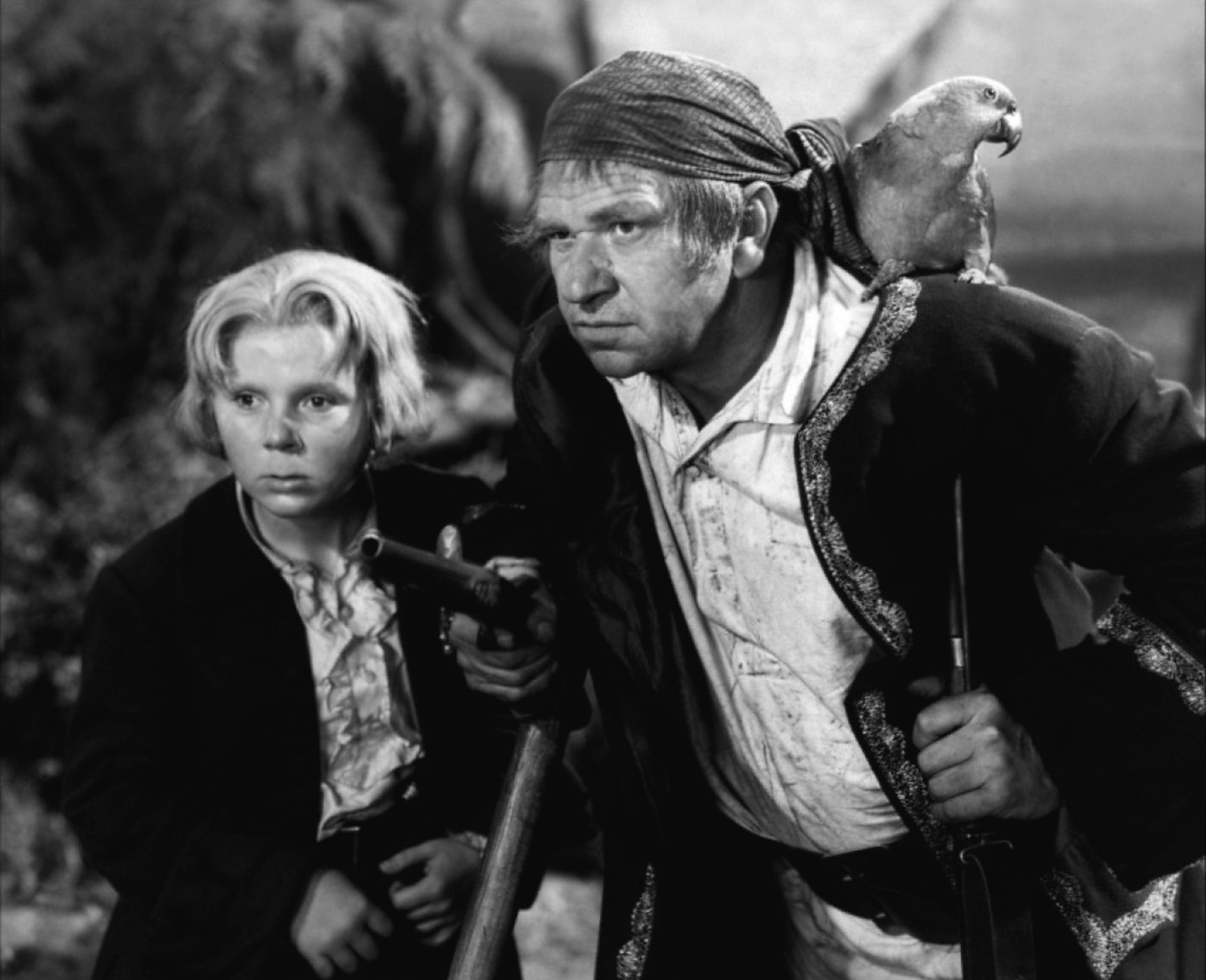
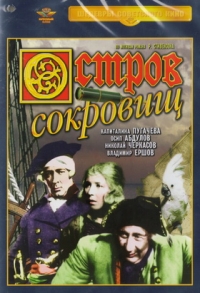

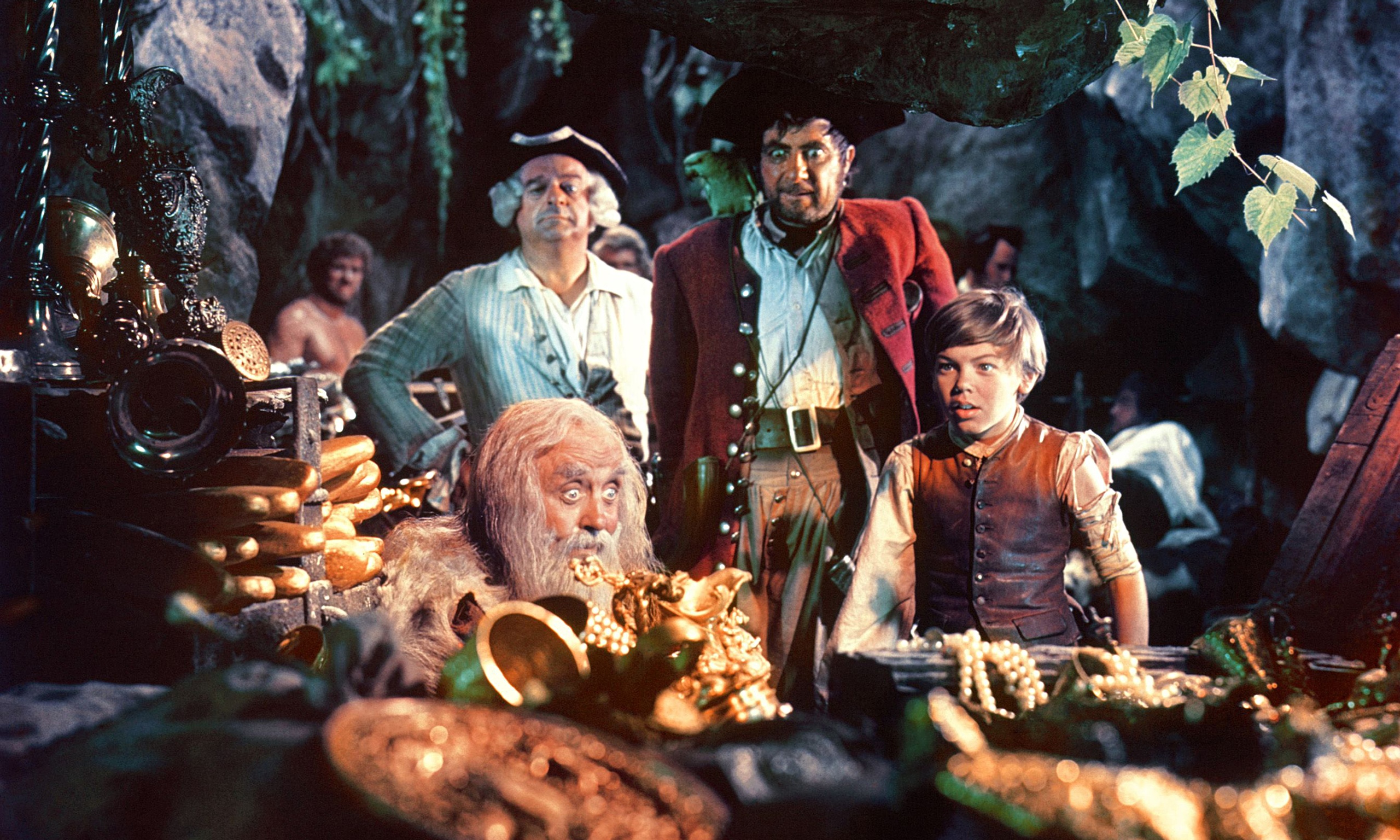
.jpg)


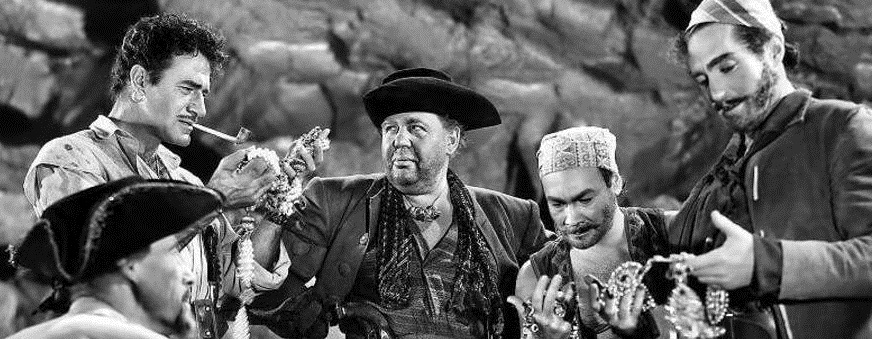
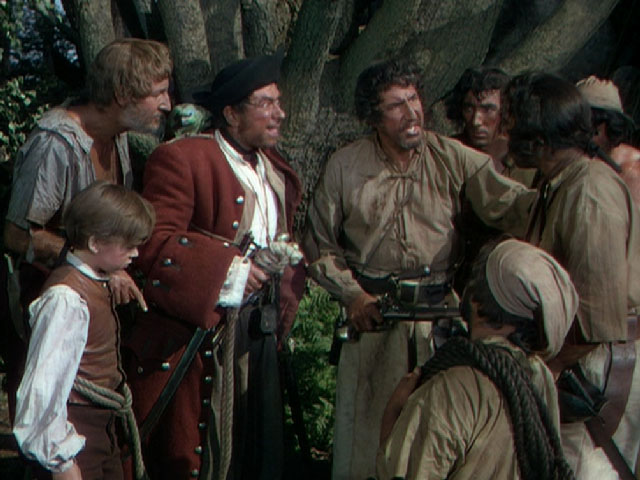
_02.jpg)






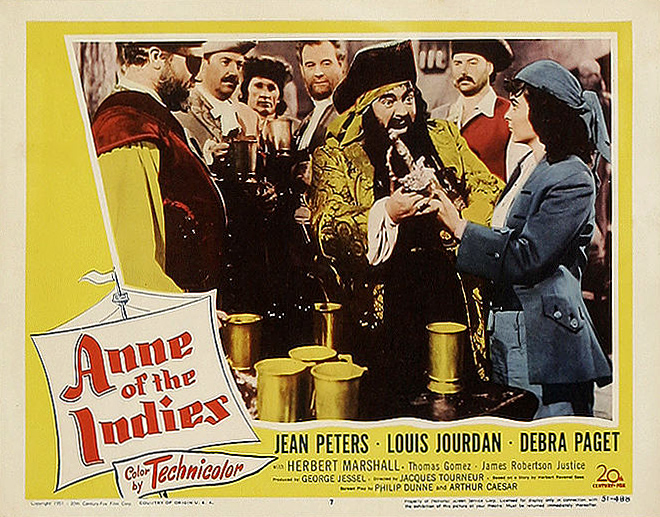


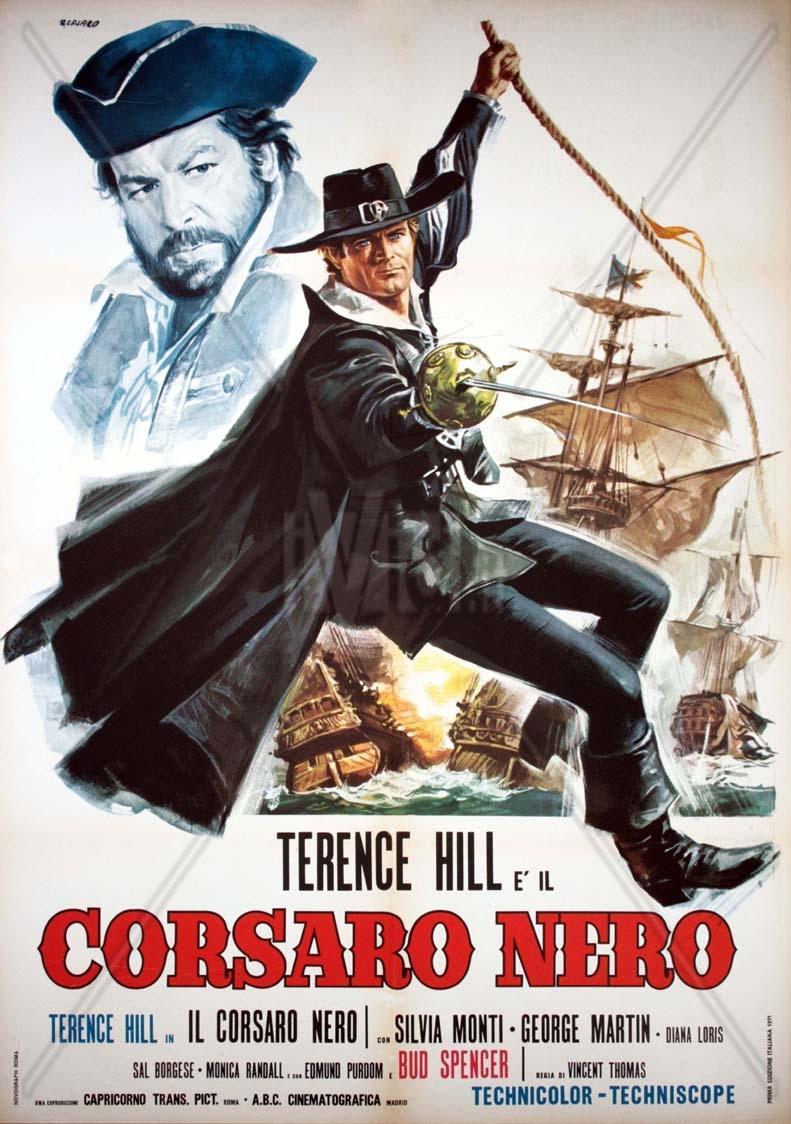




2.jpg)


